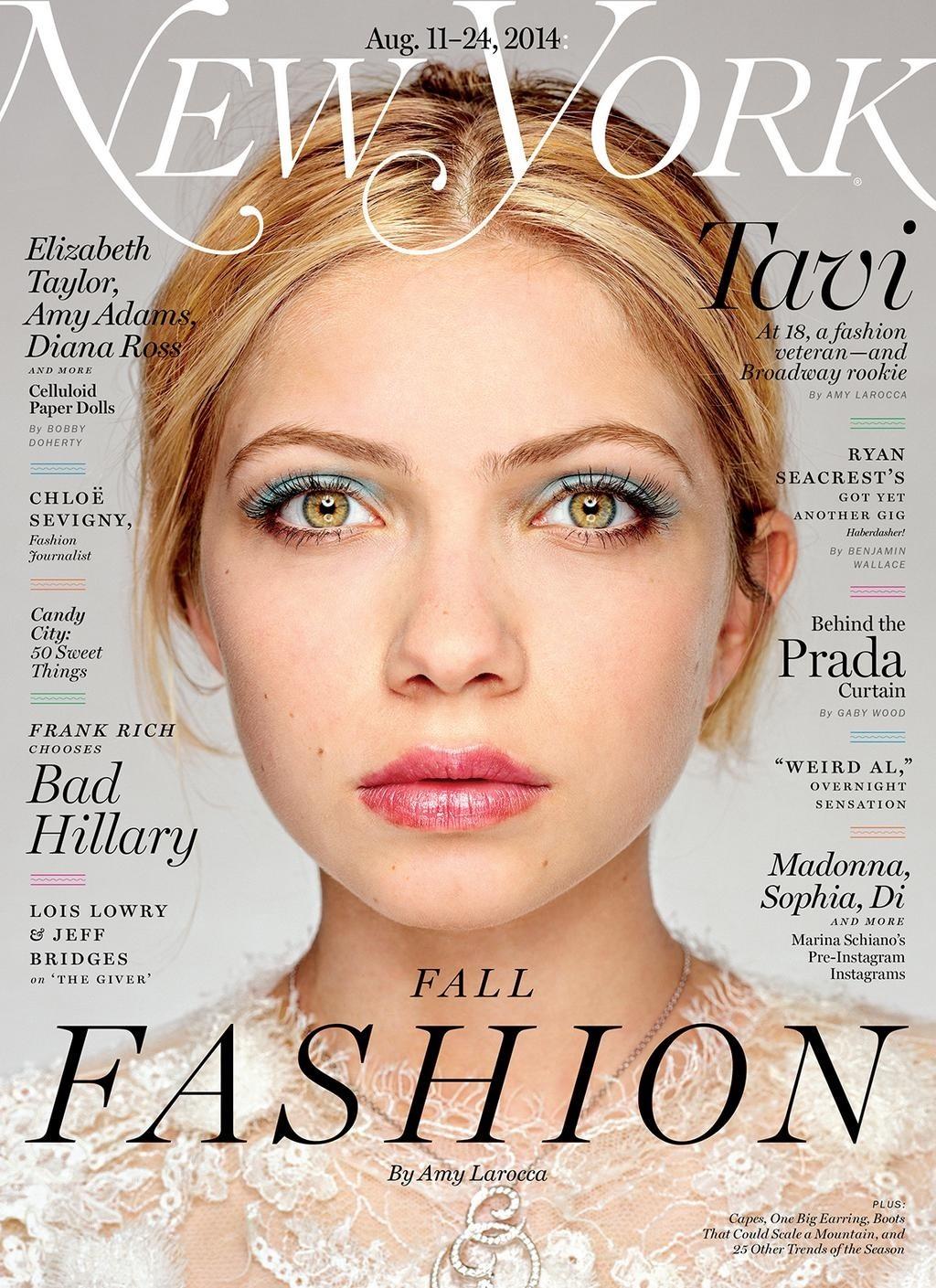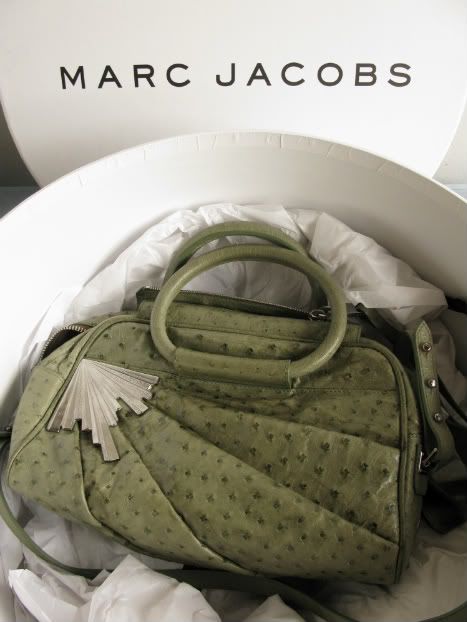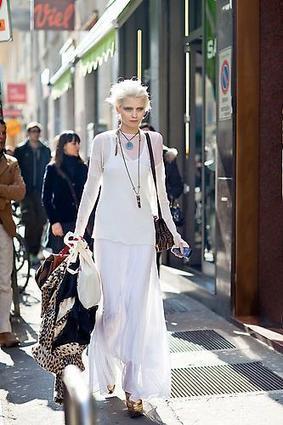Choice: How many times have you gone to a store to purchase a basic item for your wardrobe and you were completely inundated with the selection. You're thinking, "I just want a pair of jeans!" Well now you've got bootcut, skinny, fly zip, button zip, faded, not too faded, etc. We have so many choices, but is this a good thing? The author sees both the negative and positive implications of having an abundance of choice. If there is too much choice does it make the consumer annoyed and therefore they end up walking away from the purchase? On the positive side, choice can offer freedom and the option of attaining any style that you feel comfortable with.
Confusion: The back bone of confusion is this quote, " Culture is in a process of recycling: everything is juxtaposable to everything else because nothing matters." Are we confused about our identities as we live in this world of postmodernity? The author suggests that there is no clear message about what is fashionable. When we see so many images and we are so saturated with message after message it may be hard to interpret what we feel is trivial or complex. With fashion, we have the opportunity to capture individual exploration by navigating the murky waters of confusion. Through fashion one can see a glint of cohesiveness in a postmodern world boggled with a plethora of choices.
Creativity: In this postmodern world of fashion lies the ability to create different looks and different styles. You can have on the exact same t-shirt and jeans as someone else, but the looks will be totally different with different interpretations by way of accessorizing or adding your own style. This is what makes fashion fun. To have the means to wear what you want how you want gives us levels of freedom and it allows us to become who we are or who we want to be. At the end of the day, its clothing. You can always change them and create whatever desired look you want to achieve.
 In this world of global acceptance of different cultures we are experiencing postmodernity on a strategic level whether it is new sources of fabrics, textiles or cheaper, faster manufacturing of clothing. As it relates to the context of creativity, fashion is derived from the Latin word facere which means to make or to do.
In this world of global acceptance of different cultures we are experiencing postmodernity on a strategic level whether it is new sources of fabrics, textiles or cheaper, faster manufacturing of clothing. As it relates to the context of creativity, fashion is derived from the Latin word facere which means to make or to do.Relating these concepts to the post-modern world of technological integration, we see how bloggers have established a strong leg within the fashion industry. Around the dot.com boom in 2000, we see a distinct few start to pop up, and as time continues, we see how the movement continue to grow. Few bloggers make it big enough to start a subculture movement or become the face of brands, yet we see how they are able to express creativity in a way unique to their own. Let's first off take the Chanel backpack as an example. Chanel would never have done anything like this, even a decade ago, yet today Pinterest inspires this DIY style and being able to look ultra chic while working on your own projects and creations. This definitely allows creativity to come out, but also confusion about the brand. Where is Chanel headed in?
 Going back a century, even 60 years to the greaser era, we see that common styles are most easily accepted. While you have the few that enjoy being different and sticking out, styles were mass produced dwindling down on the confusion aspect. The problem with this is, without an abundance of choice, how does one express their originality? Isn't that what fashion is all about, being creatively different than the next, and having that wow/shock factor?
Going back a century, even 60 years to the greaser era, we see that common styles are most easily accepted. While you have the few that enjoy being different and sticking out, styles were mass produced dwindling down on the confusion aspect. The problem with this is, without an abundance of choice, how does one express their originality? Isn't that what fashion is all about, being creatively different than the next, and having that wow/shock factor?Within the postmodern world at this time, we see how social media has made a significant difference, allowing bloggers to share their take on style, creativity, and unique dressing, allowing them to catch the attention of major brands/fashion counterparts. Lets take Tavi Gevinson for example, who started blogging when she was only 12, but reached a subculture of the fashion industry in no time at all. Starting to blog about her opinions on the 2008 fashion runways, she was asked to be interviewed for New York Times because of her reach to audiences. She continues to show her creativity in a way that no one yet has claimed.
 While Tavi is booming, BryanBoy gained his major claim to fame by writing and youtube-ing about Marc Jacob's ostrich bag that he so desperately wanted off the runway. Seeing his post, Mr. Jacobs' himself sent BryanBoy the handbag with a hand written note and an invitation to NYFW. (The bag was actually named after BryanBoy).
While Tavi is booming, BryanBoy gained his major claim to fame by writing and youtube-ing about Marc Jacob's ostrich bag that he so desperately wanted off the runway. Seeing his post, Mr. Jacobs' himself sent BryanBoy the handbag with a hand written note and an invitation to NYFW. (The bag was actually named after BryanBoy).Bloggers such as Cashmere and Cupcakes, Song of Style, and Scott Schuman's The Satorialist have brought about the claim to originality within the fashion industry and how to make fashion and style your own. Bloggers essentially are the essence of the creativity and choice factors within the 3 c's. The loop of technological advances have allowed these bloggers to experience major success through brands and media outlets to bring their unique style to the world. Without these advances of social media, we probably would not regard bloggers as highly as we do. The ultimate goal of the blogger is to reach a massive group of consumers to be the brand's counterpart in boosting sales, revenue, and ROI's.
Without these bloggers though, it leads me to wonder, where would our fashion industry be? Where would people go to look for human inspiration, as opposed to the models we see spreading over the pages of Vogue? Would we still be experiencing that exclusivity factor and have season based fashion? This leads to the next major question that no one can quite answer, with all the major advances in technology, what's next? We have see the turnaround with bloggers taking the front row at fashion weeks, with almost as much importance as Anna Wintour. While this is great to market out to consumers, it definitely has thrown the exclusivity out of the industry - some think this is a good thing, and some do not. At the end of the day though, one wonders, where will our fashion world lead to next? What is going to be our next creative outlet in this forever growing technological post modern world filled with choices?
Questions, questions, questions... if only we had time to sit and ponder them all.


No comments:
Post a Comment